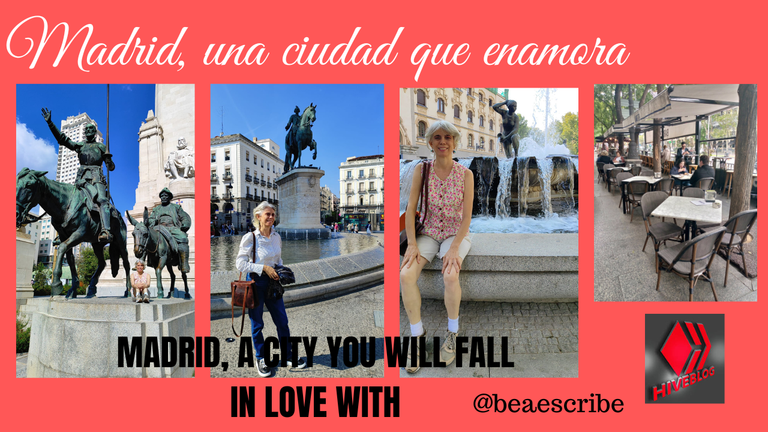
MADRID: UNA CIUDAD QUE ENAMORA
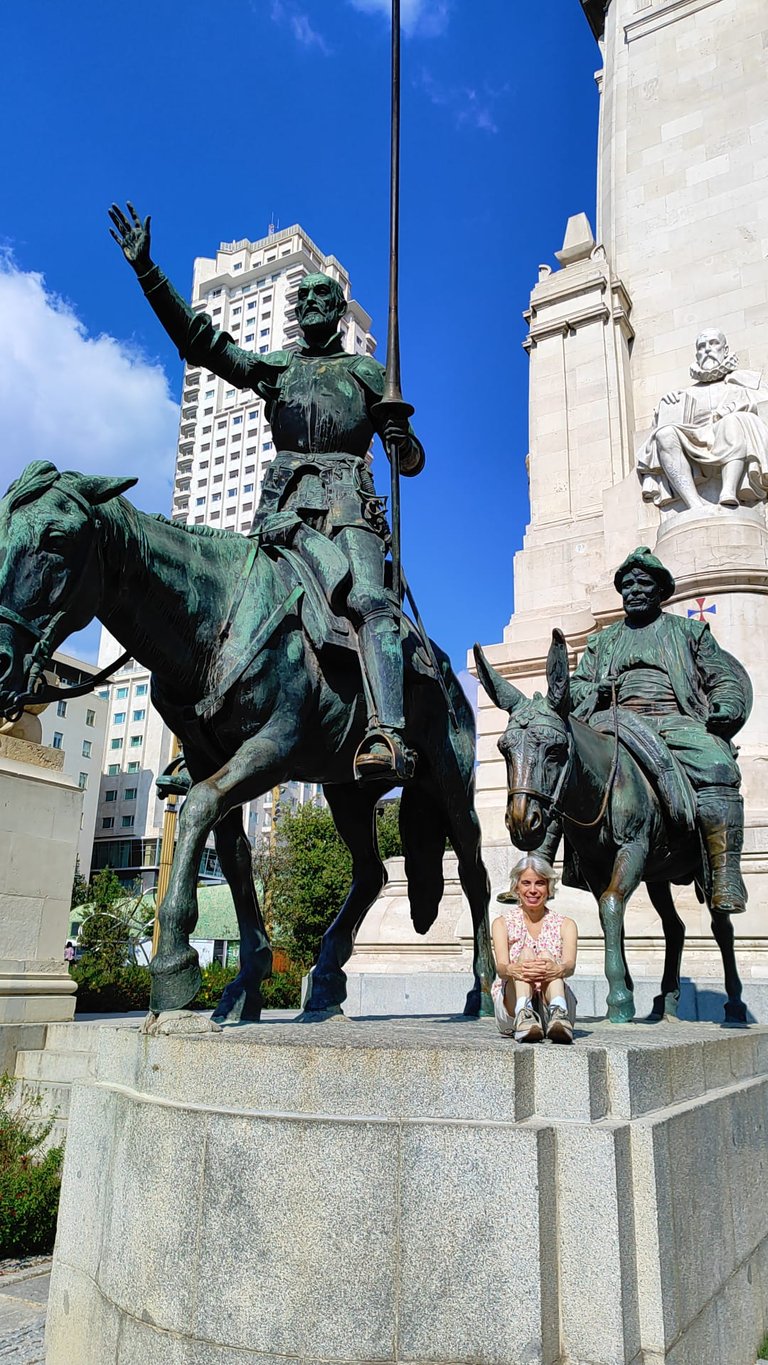
frente a la estatua de Don Quijote de la Mancha y Sancho Panza
La llegada
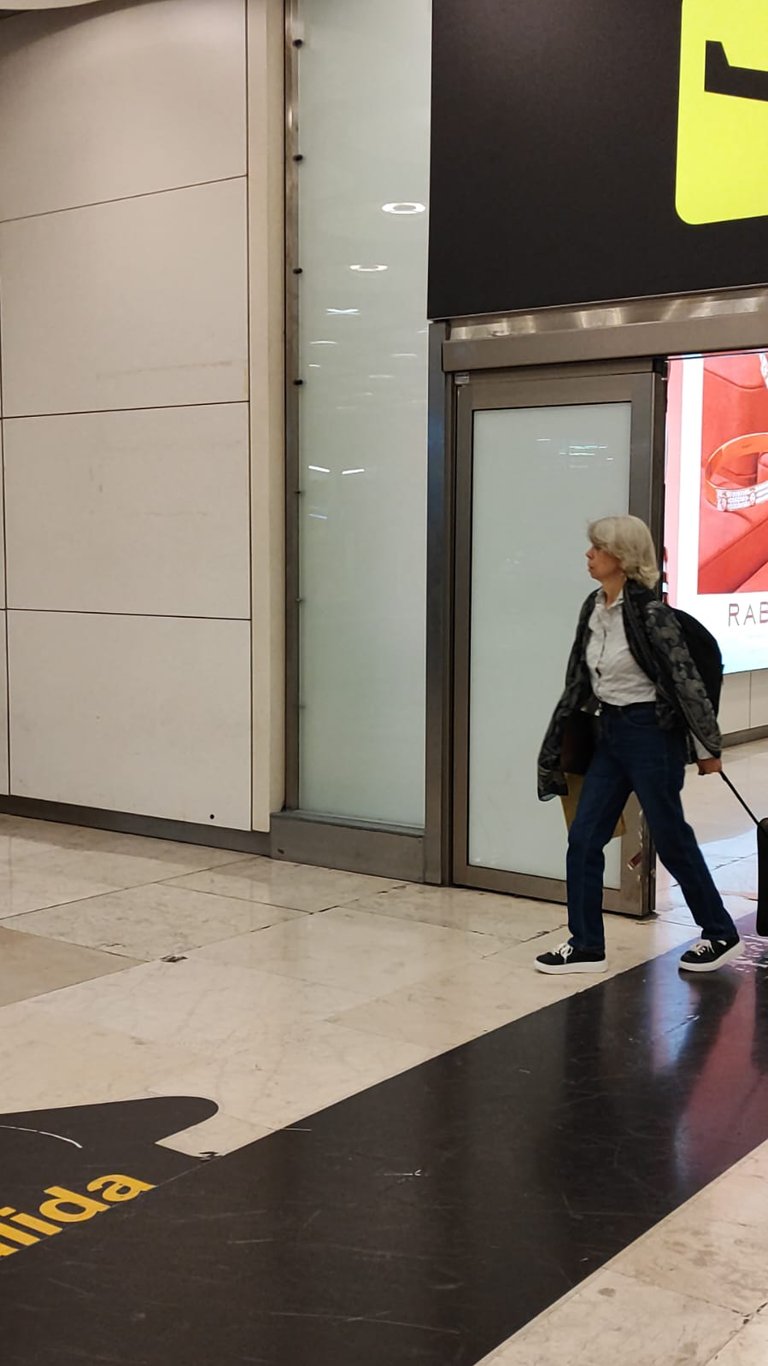
Aeropuerto Barajas, llegando a Madrid
El amor me trajo a España y probablemente no haya una mejor razón para estar en un país o en un lugar, que el amor. Nunca había oído hablar de La Herradura, este poblado a orillas del mar, ubicado en el sur de España, donde ahora estoy. Pero la primera ciudad que conocí al llegar a España fue, por supuesto, su capital, Madrid. España era para mí un referente histórico, un lugar lejano de donde habían venido tantas cosas en herencia cultural: una lengua, una religión (con la que nunca pude identificarme), una cultura, una música, que es como decir, una manera de estar en el mundo. Y unos amigos de toda la vida, cuyos padres un día llegaron a Venezuela y establecieron su hogar allí y sus hijos fueron mis compañeros de primaria y de bachillerato. Los dueños de mis colegios habían sido monjas españolas y luego españoles laicos, cuando nos mudamos a Altamira en 1974.
Llegué al aeropuerto de Barajas como quien acaba de despertarse de un sueño, luego de ocho horas de vuelo que se fueron en un instante, en la grata compañía de la poeta venezolana Carmen Verde, quien venía a España invitada a un evento poético en La Palma, Islas Canarias. Nos despedimos en el aeropuerto porque ella seguía camino a las islas. Fui a buscar mi vieja maleta con el temor de quien se enfrenta a lo desconocido. Era mi primer viaje a Europa, mi primer viaje a España, la primera vez que alguien me esperaba en algún lugar para hacer una vida en común. Apenas salí por la puerta que me daba entrada a España allí estaba Daniel, esperándome para darme la bienvenida, para llevarme a la ciudad, a Madrid.
MADRID

No tuve la suerte de haber podido viajar más joven a Europa, al llegar a Madrid no conocía ninguna de las grandes capitales europeas: ni Madrid, ni Roma, ni París, ni Londres, ni Berlín. Solicité varias becas de estudio para España en mi juventud, pero a pesar de haber sido buena estudiante, no me las dieron. Quizá la cercanía afectiva con españoles me jalaba hacia España, quería conocerla.
Cuando llegué a Madrid la ciudad me enamoró, sus plazas, sus cafés, el cielo azul con el que me recibió.Tenía una sensación de dejavú, de ya he estado aquí. Madrid no duerme, a cualquier hora del día que la recorras hay gente en las calles, especialmente turistas que vienen de los más diversos países y ciudades. A todos ofrece Madrid espacios para disfrutar. Es una ciudad muy grata para caminarla, que además de gratos cafés, conserva su patrimonio cultural arquitectónico; no sólo las edificaciones históricas monumentales, sino también algunas estrechas calles que datan de varios siglos. Muchas de sus hermosas edificaciones modernas, perfectamente conservadas, fueron construidas a finales del siglo XIX.
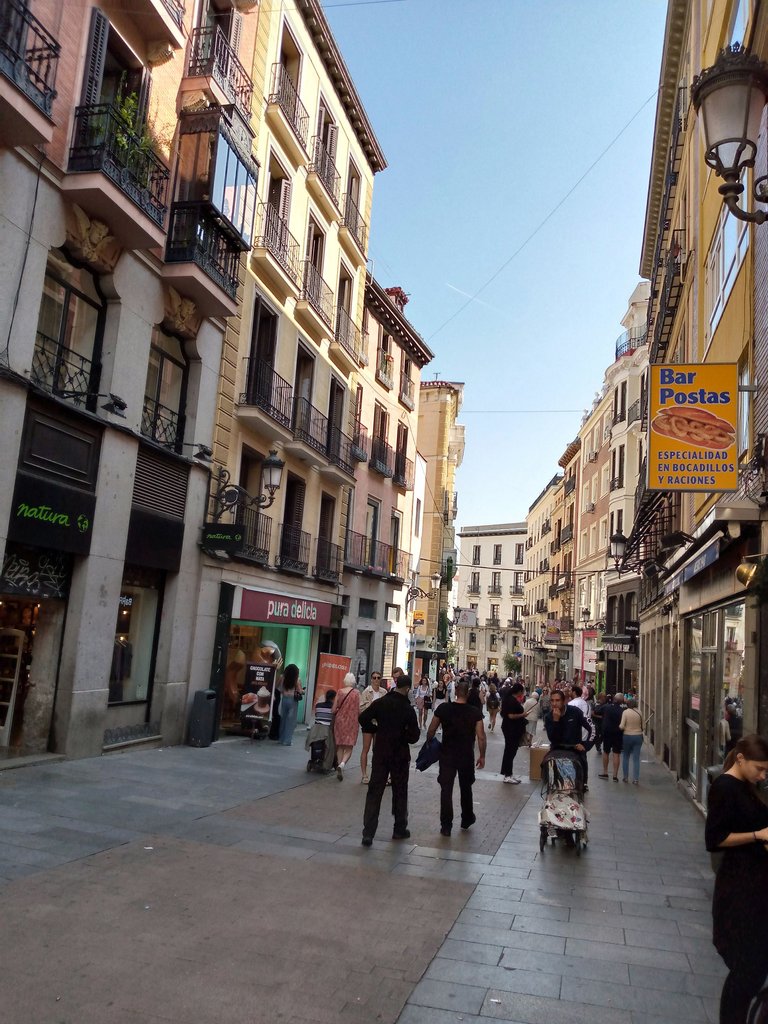
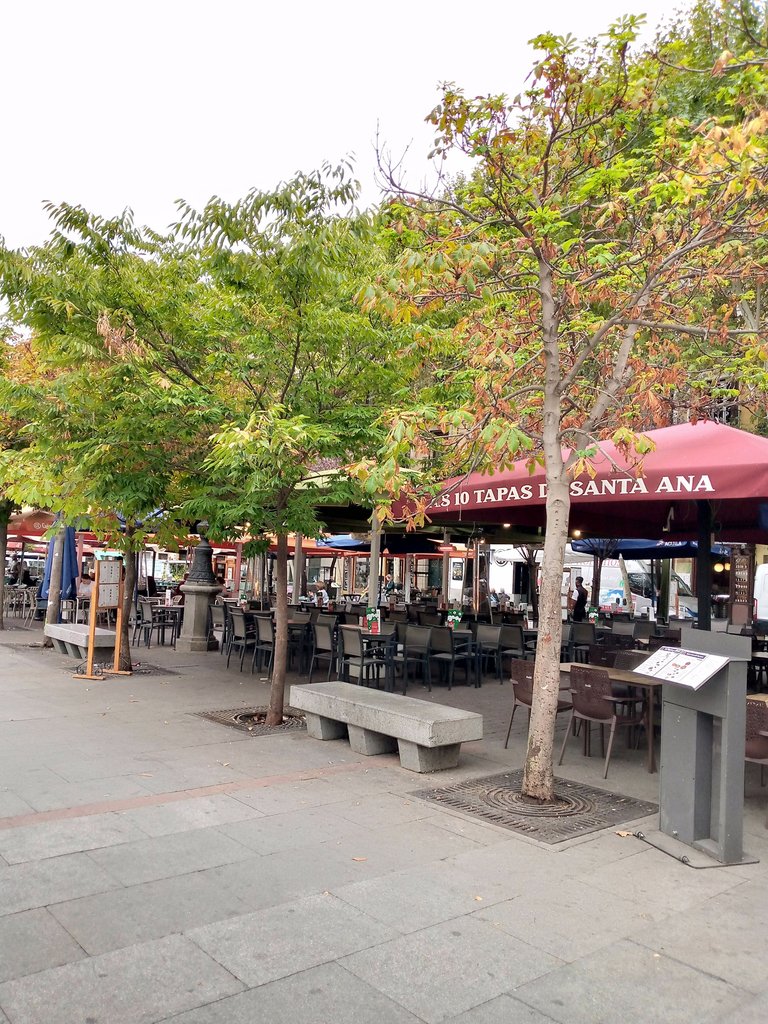
cafe ubicado en plaza Santa Ana
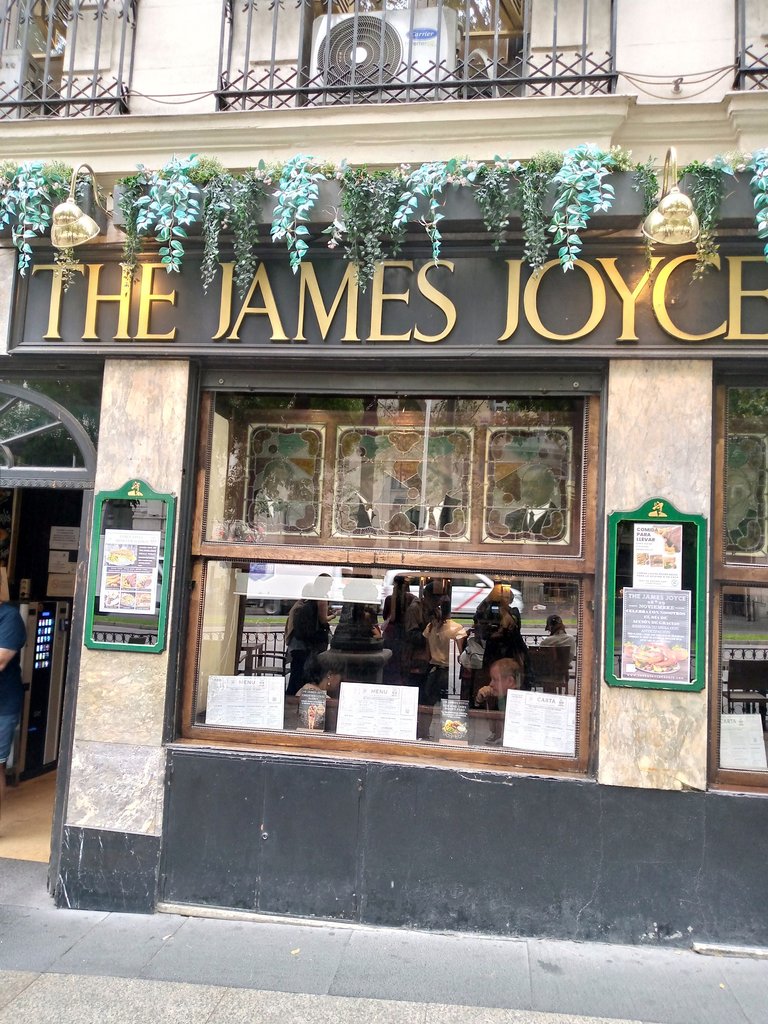
Café The James Joyce, calle de Alcalá
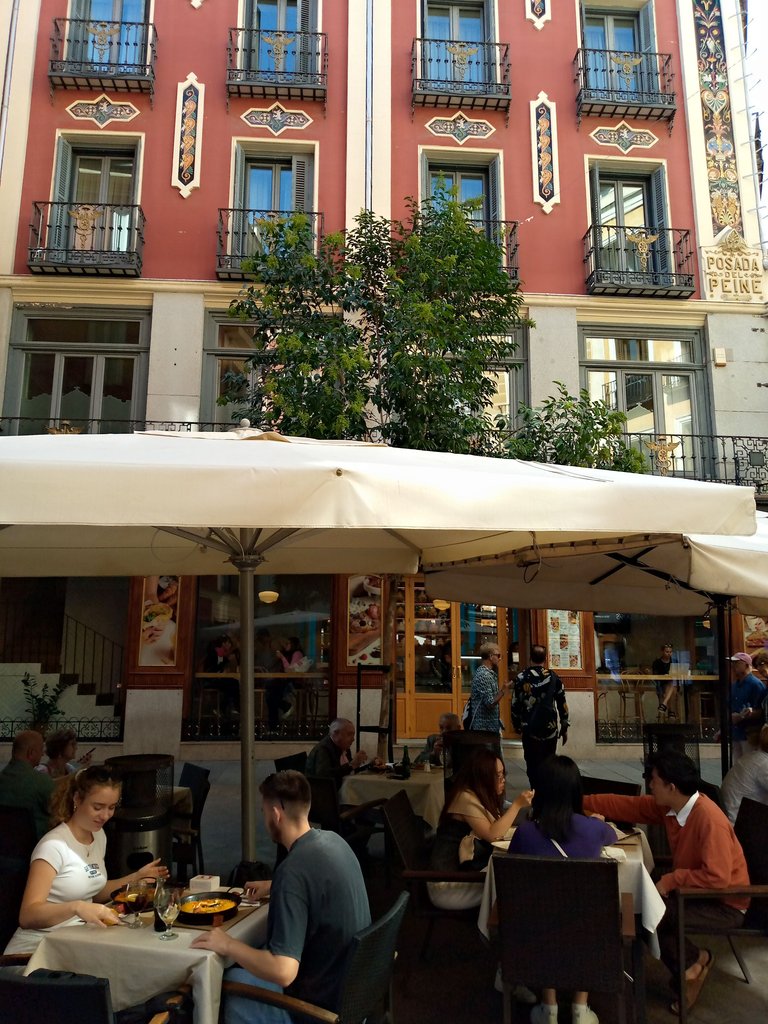
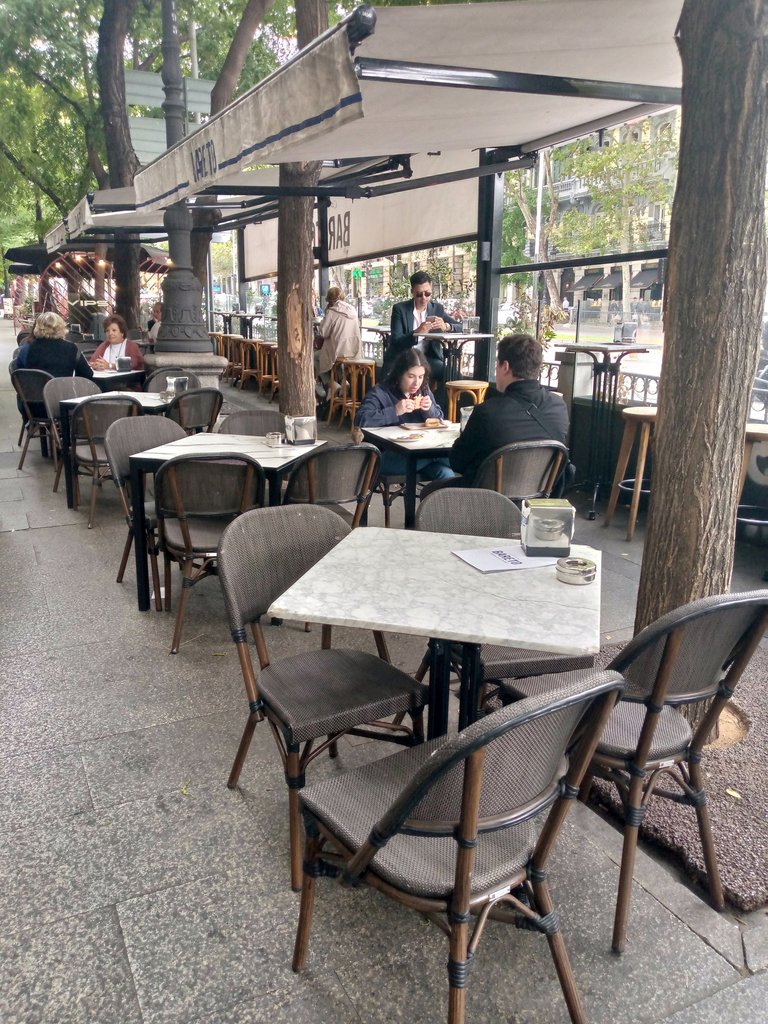
En los pocos días que estuve en Madrid, apenas tuve tiempo de visitar algunos lugares emblemáticos. Desde 1561 fue designada como sede de la Corte por el rey Felipe II y desde entonces ha sido capital de España. En sus calles, edificaciones y plazas hay mucha historia. La avenida principal de Madrid es la Gran Vía, está llena de tiendas de lujo, es la Madrid para el turista adinerado, que ves en películas y documentales. Por supuesto no estuve mucho por ahí.
LA PUERTA DEL SOL Y OTRAS PLAZAS MADRILEÑAS

Me hospedé muy cerca de la Puerta del Sol, plaza donde muchos madrileños y turistas reciben el año nuevo, es una plaza llena de vida, a cualquier hora que pases por allí. De día está llena de turistas que quieren tomarse fotos junto a la estatua del oso y el madroño, una escultura de Antonio Navarro Santafé que representa las armas heráldicas de la villa. Fue colocada el 10 de enero de 1967 en la cara oriental de la Puerta del Sol, entre las calles de Alcalá y Carrera de San Jerónimo. Yo también me tomé foto junto a la estatua del oso y el dulce árbol del madroño. De noche, la plaza adquiere un encanto distinto, y con frecuencia puedes ver jóvenes saltimbanquis que ponen música y demuestran sus habilidades a los turistas por unas monedas. Hay una estación del metro de Madrid que sale a esa plaza emblemática.Te comparto algunas fotos de la plaza que pude tomar.
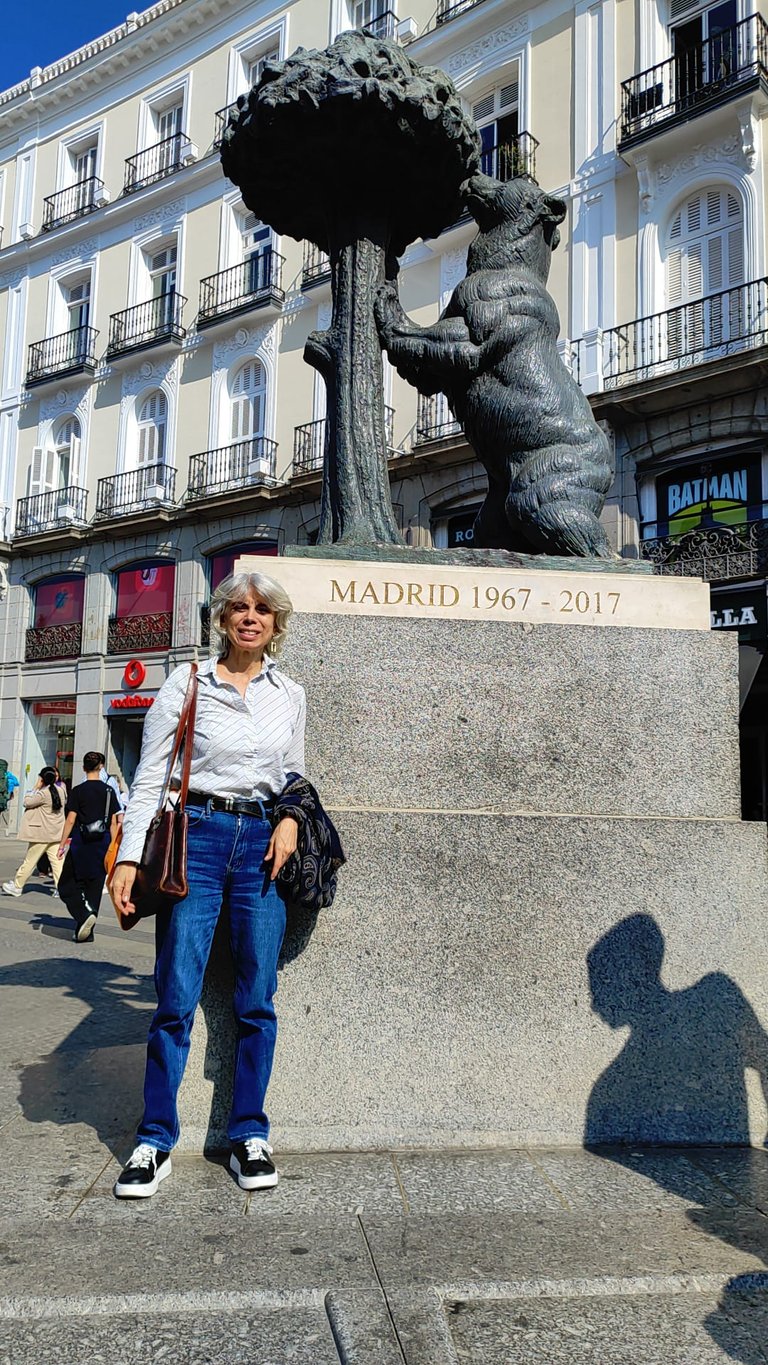
Junto a la estatua del oso y el madroño
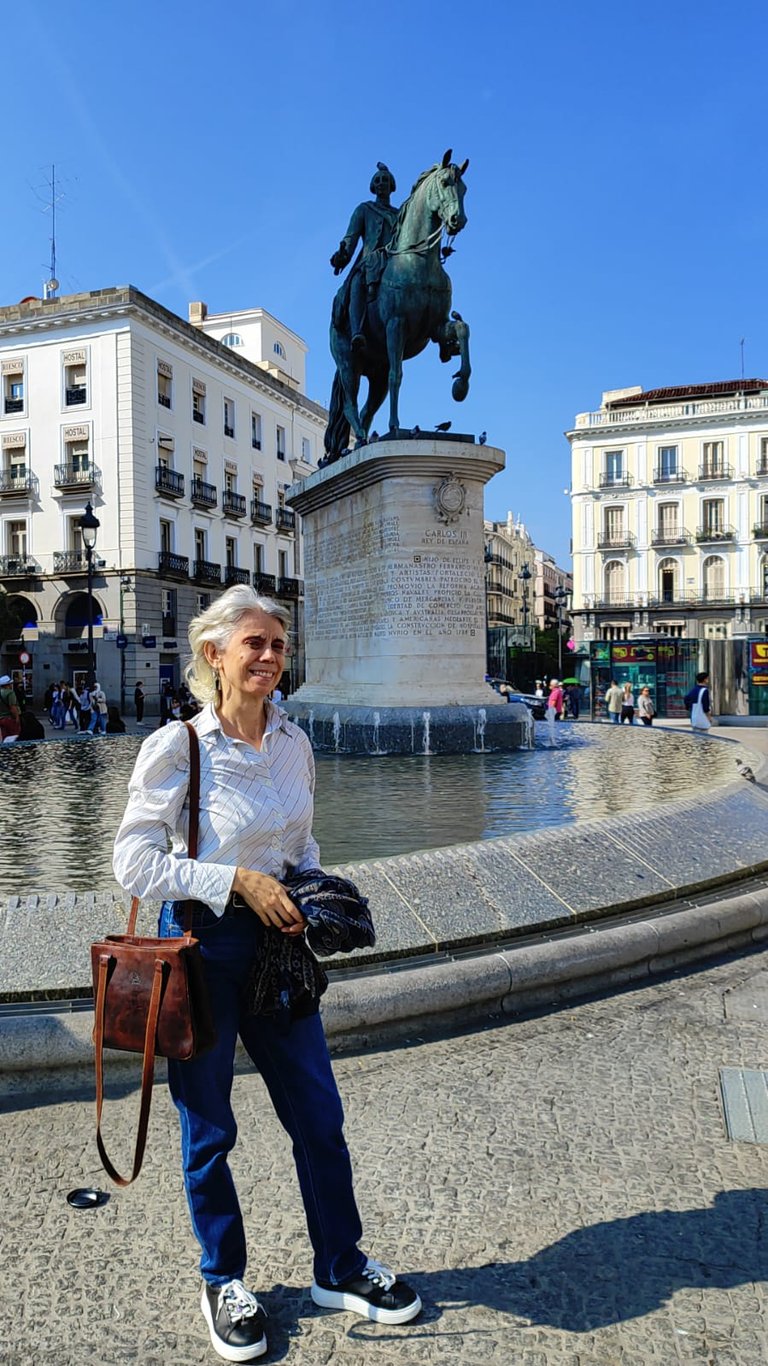
Junto a la estatua ecuestre de Carlos III del escultor Eduardo Zancada
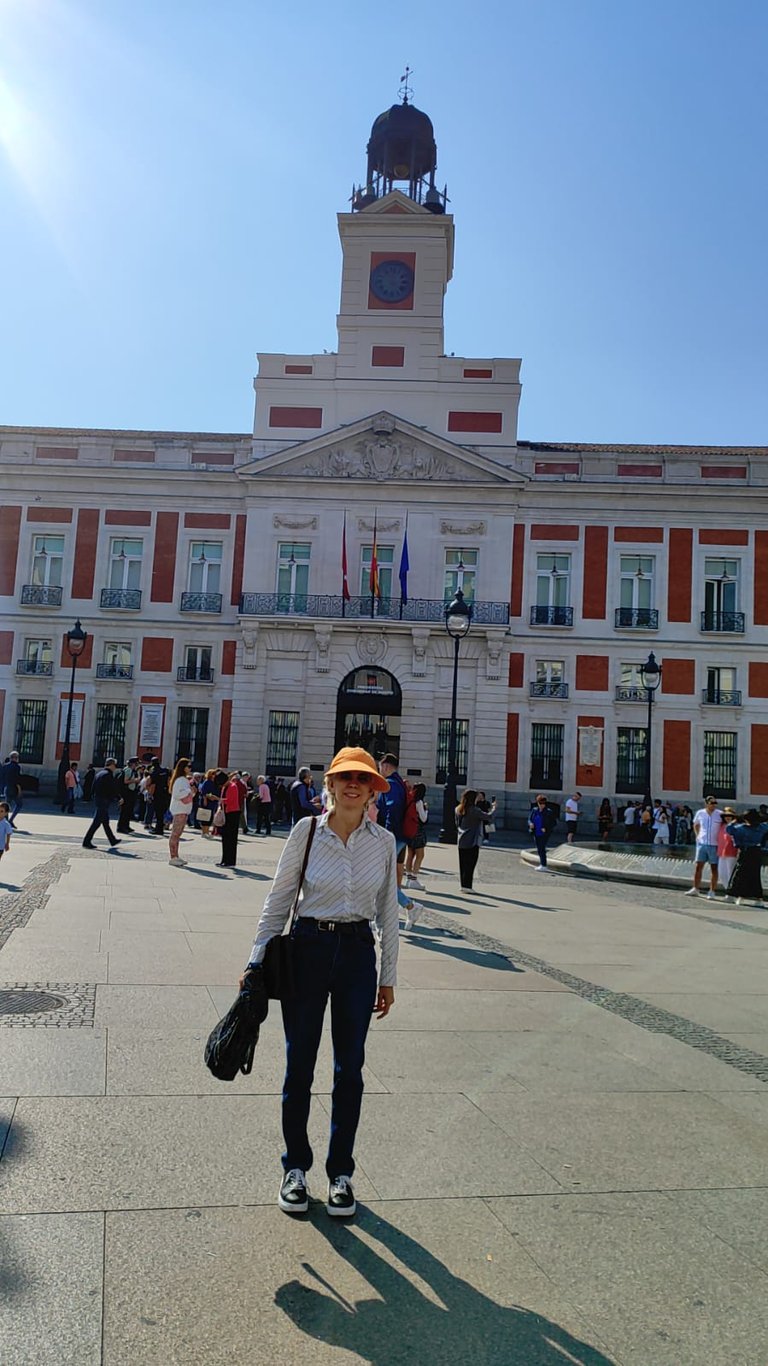
frente al edificio Casa de Correos, donde se ubica el reloj que marca la llegada del nuevo año
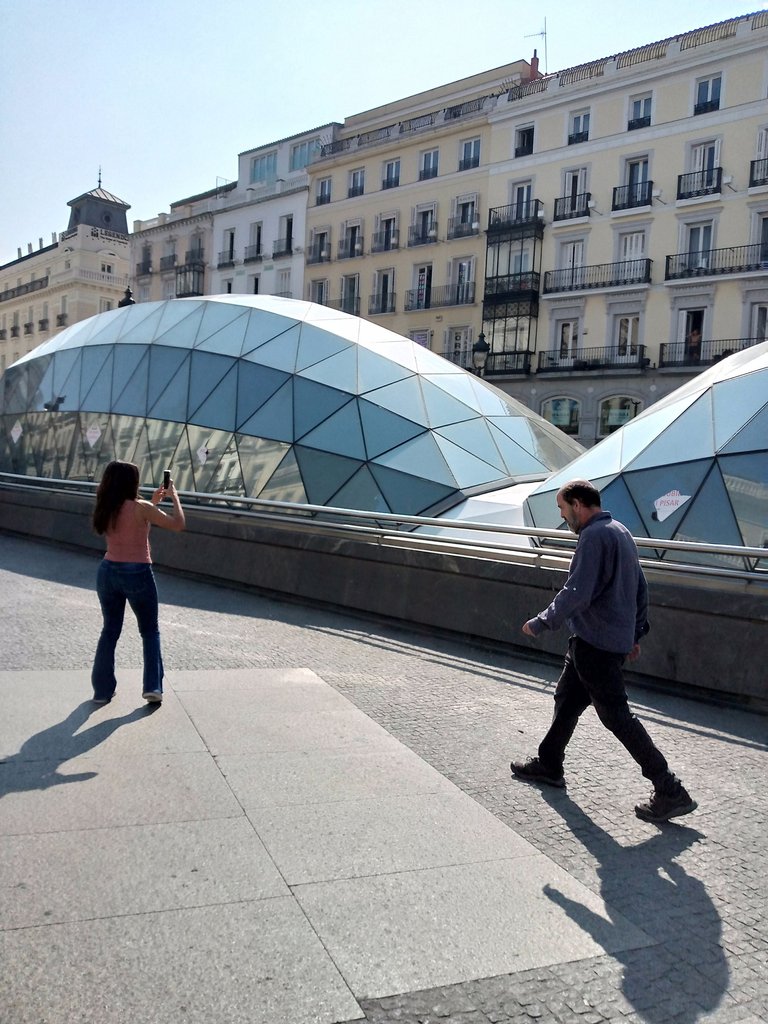
metro Puerta del Sol
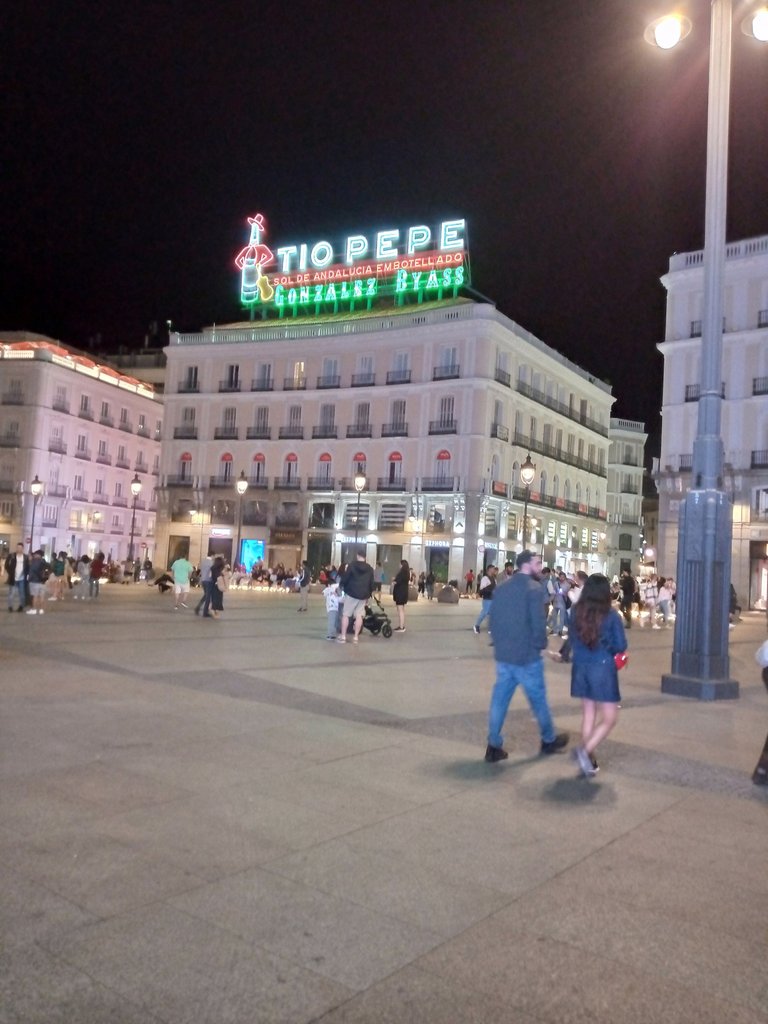
plaza La Puerta del Sol noche
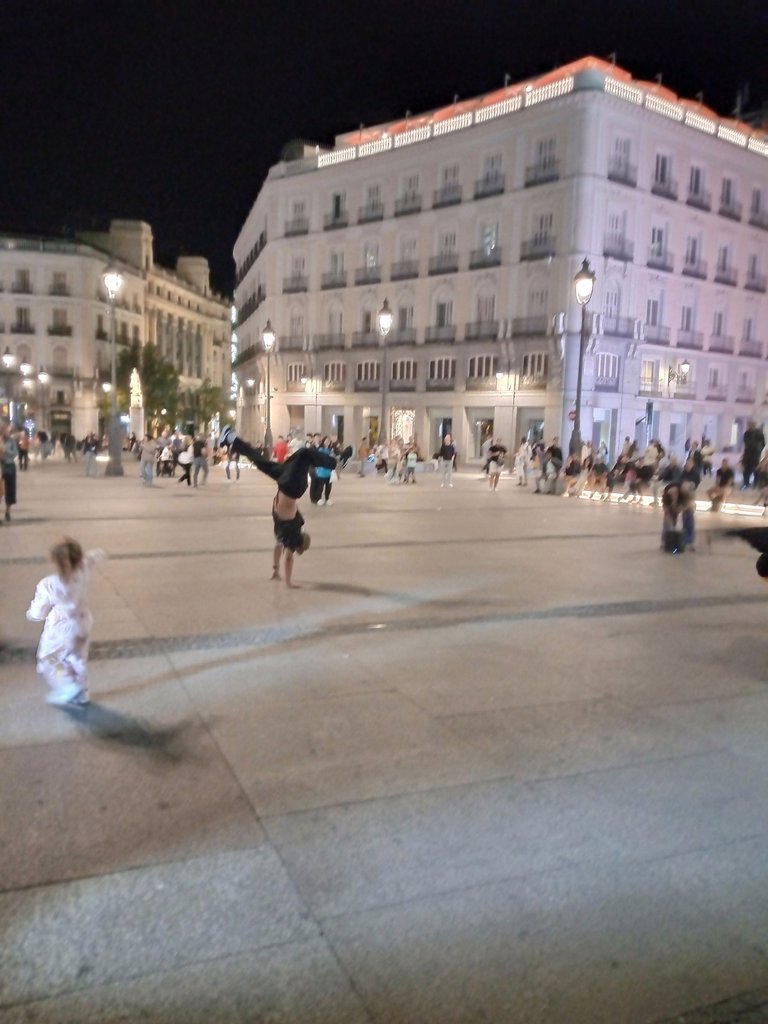
plaza La Puerta del Sol noche saltimbanquis
La Plaza Mayor
Está ubicada a 300 metros de la Puerta del Sol y también suele estar llena de turistas tomándose fotos. Yo, por supuesto, también me he tomado alguna foto allí. La construcción de esta plaza se remonta al siglo XVI. Como era frecuente en aquellos tiempos, en la plaza más grande de la ciudad, ubicada en un cruce de caminos en las afueras de la ciudad, hoy calles de Toledo y Atocha, se estableció el mercado principal de la villa medieval. Entonces se llamaba Plaza del Arrabal. Pero luego de que la Corte se estableció en Madrid, en 1561, Felipe II encargó el proyecto de remodelación de la plaza a Juan de Herrera, se derribaron las casas que rodeaban la antigua plaza y se construyó el primer edificio de la nueva, la Casa de la Panadería, que diseñó el arquitecto Diego Sillero. Felipe III terminó la remodelación en 1619. Es, sin duda, una plaza con mucha historia, que ha sufrido incluso grandes incendios y ha tenido que ser reconstruida.

Yo en la Plaza Mayor
OTRAS PLAZAS Y FUENTES DE MADRID
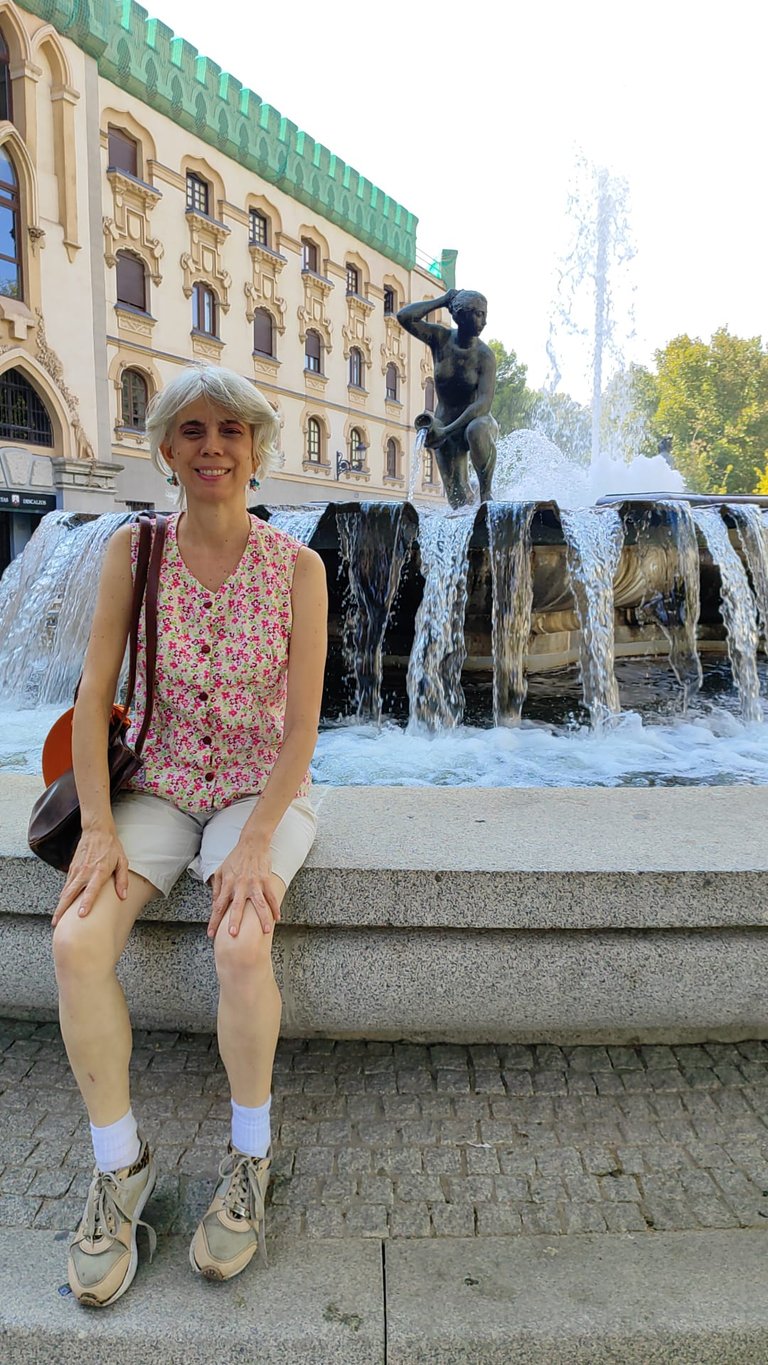
Madrid, como cualquier ciudad grande y con historia, tiene muchas plazas y fuentes ornamentales, te mostraré algunas que pude visitar:
Plaza Santa Ana
Otra plaza que tuve la oportunidad de visitar fue la plaza de Santa Ana, que también se conoce con el nombre de plaza del Príncipe Alfonso. Esta plaza abierta está situada en el distrito Centro de la ciudad, en el barrio de las Letras. Construida en 1810, ha sufrido diversas modificaciones. Entre sus edificios importantes está el Teatro Español y el Hotel Reina Victoria. Allí pude ver las estatuas dedicadas al dramaturgo del siglo de Oro Pedro Calderón de la Barca y a mi amado poeta y dramaturgo Federico García Lorca (junto a la cual les comparto una foto). Sobre la plaza Santa Ana escribió Ramón Gómez de la Serna lo siguiente:
Pasar por la plaza de Santa Ana era entrar en un remanso y perderse en un pequeño laberinto de caminos y árboles... Hay noches en que no podría digerir la verdad de la noche si no paso un momento por la plaza de Santa Ana. Ramón Gómez de la Serna (1931)
En 1586, Santa Teresa de Ávila, junto a sus discípulos San Juan de la Cruz y Ana de Jesús fundaron allí un convento de carmelitas descalzas. En 1900 la plaza tuvo un mercadillo ornitológico, con anterioridad, en 1861, se había propuesto una galería acristalada con el nombre de "Mercado de pájaros y flores", que finalmente no se realizó. En 1967 se inició la construcción de un aparcamiento para autos subterráneo, cuya estructura y accesos se renovó en el 2001, con lo cual se eliminaron casi todos los jardines que quedaban en la plaza. Ciertamente, hoy la mayor parte de la plaza carece de áreas verdes.
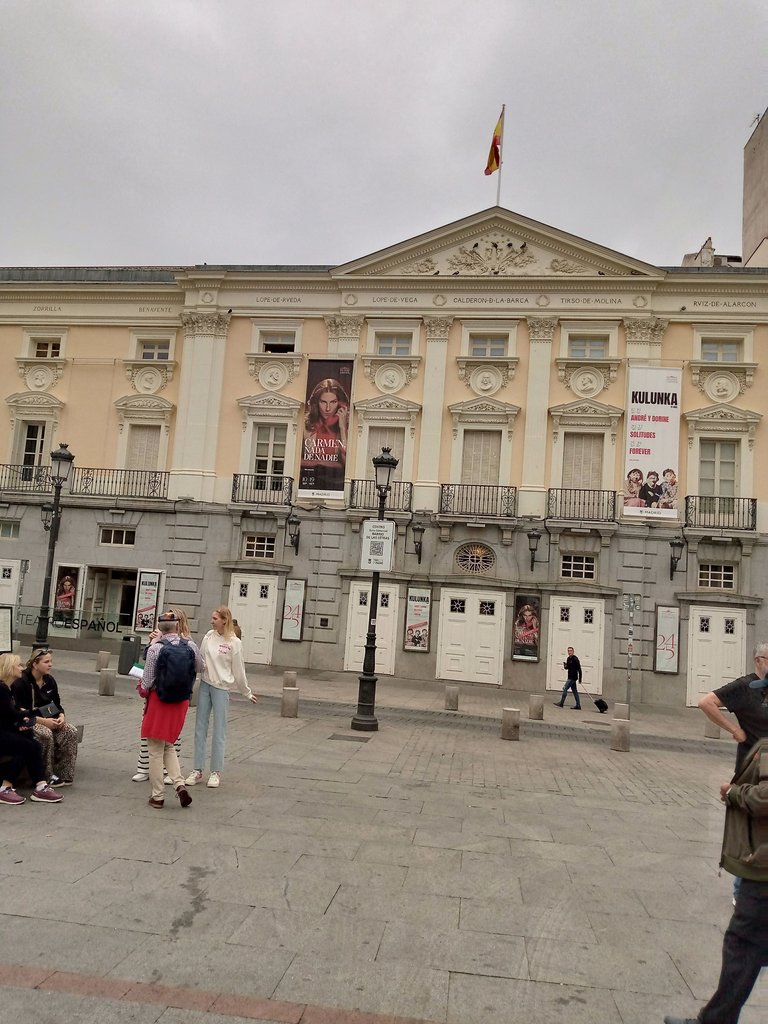
Fachada del Teatro Español de Madrid
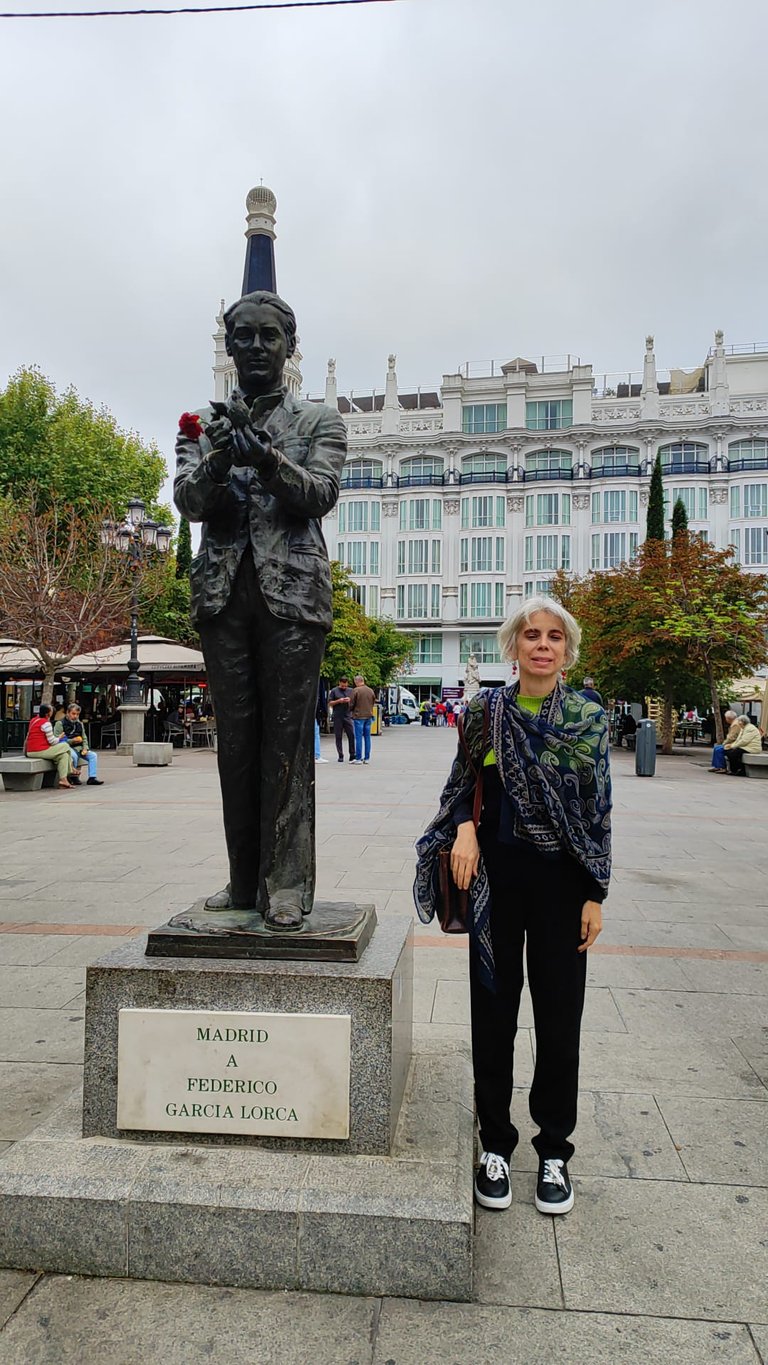
Yo junto a la estatua homenaje a Federico García Lorca, plaza Santa Ana
Fuente de Neptuno
La fuente de Neptuno forma parte de un grupo de 5 fuentes escultóricas diseñadas por el escultor Ventura Rodríguez para el Salón del Prado, junto con las fuentes de Cibeles, de Apolo, la de Cuatro Fuentes y la de la Alcachofa. Es una fuente de estilo neoclásico ubicada en el centro de la glorieta a la que da nombre, dentro de la plaza. Fue una de las fuentes más bonitas que pude visitar en Madrid.
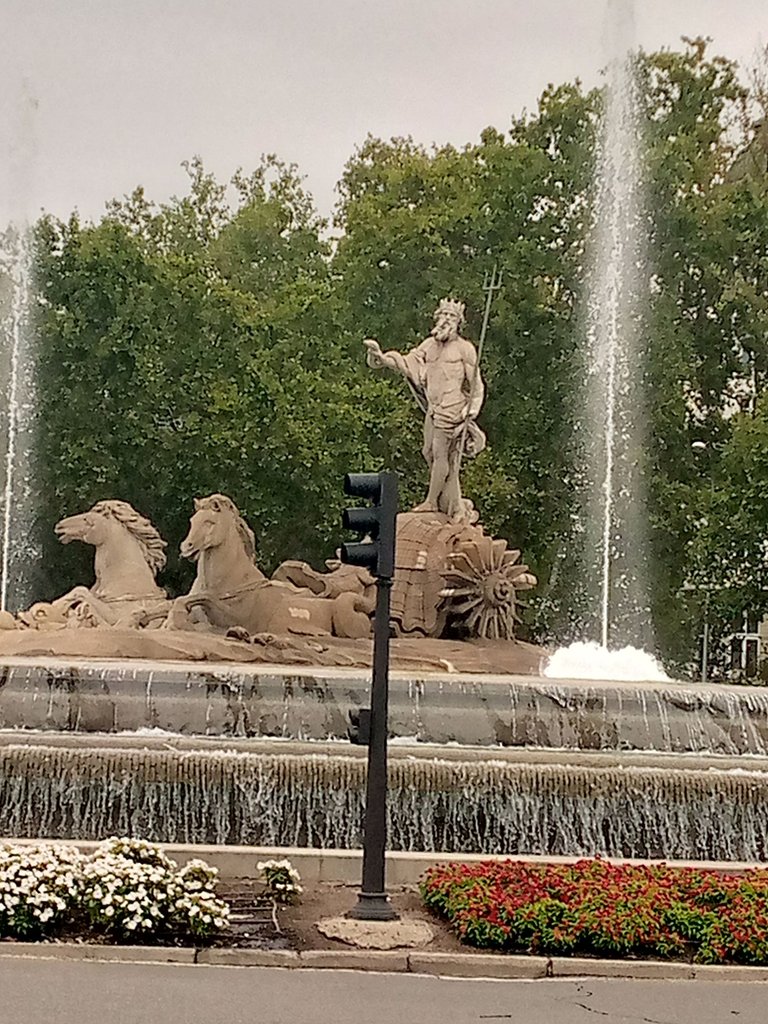
Fuente de Neptuno

Espero que hayas disfrutado este artículo sobre Madrid y algo de su historia. Pronto escribiré un nuevo artículo dedicado al parque El Retiro, uno de los lugares más bonitos de la ciudad. ¿Conoces Madrid? Si tienes la oportunidad visita la hermosa capital de España.
📸Todas las fotos que ves fueron tomadas con la cámara de mi teléfono móvil.
Traducción al inglés Deepl.com

MADRID: A CITY YOU WILL FALL IN LOVE WITH

in front of the statue of Don Quixote de la Mancha and Sancho Panza
Arrival

Arrival, Barajas airport
Love brought me to Spain and there is probably no better reason to be in a country or a place than love. I had never heard of La Herradura, this village by the sea, located in the south of Spain, where I am now. But the first city I knew when I arrived in Spain was, of course, its capital, Madrid. Spain was for me a historical reference, a faraway place where so many things had come from in cultural heritage: a language, a religion (with which I could never identify myself), a culture, a music, which is to say, a way of being in the world. And some lifelong friends, whose parents one day came to Venezuela and established their home there and their children were my classmates in elementary and high school. The owners of my schools had been Spanish nuns and then lay Spaniards when we moved to Altamira in 1974.
I arrived at Barajas airport like someone who has just woken up from a dream, after an eight-hour flight that was gone in an instant, in the pleasant company of the Venezuelan poet Carmen Verde, who was coming to Spain invited to a poetry event in La Palma, Canary Islands. We said goodbye at the airport because she was on her way to the islands. I went to get my old suitcase with the fear of someone facing the unknown. It was my first trip to Europe, my first trip to Spain, the first time someone was waiting for me somewhere to make a life together. As soon as I stepped out of the door that gave me entrance to Spain, there was Daniel, waiting to welcome me, to take me to the city, to Madrid.
MADRID

I was not fortunate enough to have been able to travel to Europe when I was younger; when I arrived in Madrid I did not know any of the great European capitals: neither Madrid, nor Rome, nor Paris, nor London, nor Berlin. I applied for several scholarships to study in Spain in my youth, but despite being a good student, they were not given to me. Perhaps the affective closeness with Spaniards pulled me towards Spain, I wanted to know it.
When I arrived in Madrid I fell in love with the city, its squares, its cafes, the blue sky with which it welcomed me, I had a feeling of déjà vu, of “I've already been here”. Madrid does not sleep, at any time of the day you walk through it there are people in the streets, especially tourists coming from the most diverse countries and cities. Madrid offers everyone places to enjoy. It is a very pleasant city to walk around, which in addition to pleasant cafes, preserves its architectural cultural heritage; not only the monumental historic buildings, but also some narrow streets that date back several centuries. Many of its beautiful modern buildings, perfectly preserved, were built at the end of the 19th century.


café located in Santa Ana square

The James Joyce café,Alcalá street


In the few days I was in Madrid, I barely had time to visit some emblematic places. Since 1561 it was designated as the seat of the Court by King Philip II and since then it has been the capital of Spain. In its streets, buildings and squares there is a lot of history. The main avenue of Madrid is the Gran Via, it is full of luxury stores, it is the Madrid for the wealthy tourist, you see in movies and documentaries. Of course I didn't spend much time there.
LA PUERTA DEL SOL AND OTHERS MADRID SQUARES

I stayed very close to Puerta del Sol, the square where many Madrilenians and tourists welcome the new year, it is a square full of life, at any time you pass by. During the day it is full of tourists who want to take pictures next to the statue of the bear and the strawberry tree, a sculpture by Antonio Navarro Santafé representing the heraldic arms of the town. It was placed on January 10, 1967 on the eastern side of the Puerta del Sol, between the streets of Alcalá and Carrera de San Jerónimo. I also took my picture next to the statue of the bear and the sweet strawberry tree. At night, the square takes on a different charm, and you can often see young acrobats playing music and demonstrating their skills to tourists for a few coins. There is a Madrid subway station that goes out to this emblematic square, and I share with you some photos of the square that I was able to take.

next to the statue of the bear and the strawberry tree

next to the equestrian statue of Carlos III by the sculptor Eduardo Zancada

in front of the Casa de Correos building, where the clock that marks the arrival of the new year is located.

Puerta del Sol metro station

Puerta del Sol square at night
Puerta del Sol square at night

The Main Square
It is located 300 meters from the Puerta del Sol and is also usually full of tourists taking pictures. The construction of this square dates back to the 16th century. As it was frequent in those times, in the largest square of the city, located at a crossroads on the outskirts of the city, today Toledo and Atocha streets, the main market of the medieval town was established. It was then called Plaza del Arrabal. But after the Court was established in Madrid, in 1561, Philip II commissioned the remodeling project of the square to Juan de Herrera, the houses surrounding the old square were demolished and the first building of the new one was built, the Casa de la Panadería, designed by the architect Diego Sillero. Philip III finished the remodeling in 1619. It is, without a doubt, a square with a lot of history, which has even suffered major fires and has had to be rebuilt.

Me at The Main Square
OTHER SQUARES AND FOUNTAINS IN MADRID

Madrid, like any big city with history, has many squares and ornamental fountains, I will show you some that I was able to visit:
Santa Ana Square
Another square that I had the opportunity to visit was the Plaza de Santa Ana, which is also known by the name of Plaza del Príncipe Alfonso. This open square is located in the Centro district of the city, in the neighborhood of Las Letras. Built in 1810, it has undergone several modifications. Among its important buildings are the Teatro Español and the Hotel Reina Victoria. There I could see the statues dedicated to the Golden Century playwright Pedro Calderón de la Barca and to my beloved poet and playwright Federico García Lorca (next to which I share a photo). Ramón Gómez de la Serna wrote the following about Plaza Santa Ana:
Passing through the Plaza de Santa Ana was to enter a backwater and get lost in a small labyrinth of paths and trees.... There are nights when I could not digest the truth of the night if I did not spend a moment in the Plaza de Santa Ana. Ramón Gómez de la Serna (1931)
In 1586, Saint Teresa of Avila, together with her disciples Saint John of the Cross and Anne of Jesus, founded a convent of Discalced Carmelites there. In 1900 the square had an ornithological flea market, previously, in 1861, a glazed gallery had been proposed with the name of “Market of birds and flowers”, which finally was not realized. In 1967, construction began on a subway parking lot, whose structure and accesses were renovated in 2001, thus eliminating almost all the gardens that remained in the square. Certainly, today most of the square lacks green areas.

Teatro Español facade

Federico García Lorca statue
Neptuno fountain
The fountain of Neptune is part of a group of 5 sculptural fountains designed by the sculptor Ventura Rodriguez for the Prado Hall, along with the fountains of Cybele, Apollo, Cuatro Fuentes and the Artichoke. It is a neoclassical fountain located in the center of the traffic circle to which it gives its name, inside the square. It was one of the most beautiful fountains I could visit in Madrid.

I hope you enjoyed this article about Madrid and some of its history. Soon I will write a new article dedicated to El Retiro park, one of the most beautiful places in the city. Do you know Madrid? If you have the opportunity visit the beautiful capital of Spain.
All the pictures you see were taken with the camera of my Infinix HOT 10 cell phone.
Translation to english Deepl.com
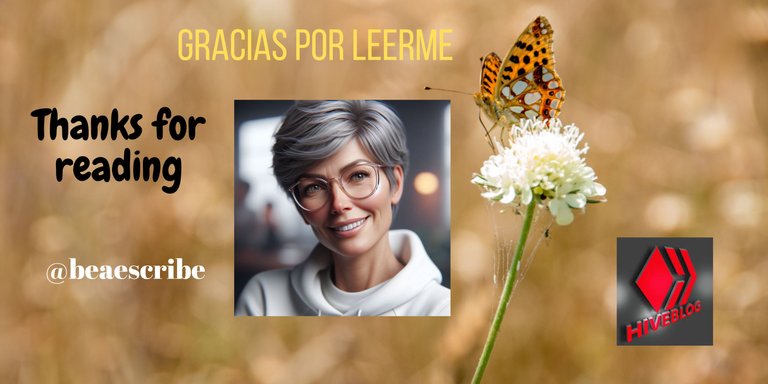












































¿ᴺᵉᶜᵉˢᶦᵗᵃˢ ᴴᴮᴰ? ᵀᵉ ˡᵒ ᵖʳᵉˢᵗᵃᵐᵒˢ ᶜᵒⁿ @ruta.loans
Muchas gracias por el apoyo.
Muy de acuerdo Madrid no duerme, siempre hay un bullicio por allí y un orden para todo. Gente para tirar para arriba y lo bueno no se va la luz mi querida @beaescribe, que bonito verte en lugares tan emblemático, tienes una buena guía. Un abrazo.
Saludos, querida @sacra97 Gracias por tu lectura y comentario. Un abrazo. 🤗
Es bueno verte en una ciudad hermosa, llénate de su energía tan especial.